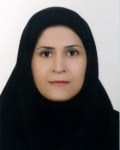| نویسندگان | مریم رمضانی,پویا تدین رودی,محسن عکافی مبارکه |
|---|
| همایش | هشتمین کنفرانس انرژیهای تجدیدپذیر و تولید پراکنده ایران |
|---|
| تاریخ برگزاری همایش | 2021-03-13 |
|---|
| محل برگزاری همایش | بیرجند |
|---|
| شماره صفحات | 0-0 |
|---|
| نوع ارائه | سخنرانی |
|---|
| سطح همایش | داخلی |
|---|
چکیده مقاله
In recent years, advances in renewable energy technologies related to wind turbines, photovoltaic modules, fuel cells, and microturbines as well as a huge increase in energy consumption and pollution have led generation and distribution companies to change their strategies by including distributed generation units in power systems. Wind and solar energies are the largest renewable sources with uncertainty, which limits their applicability. Since the generated solar-wind power cannot be stored, other generation sources have to be employed to balance production, demand, and losses. Hydropumps are used to store energy and are integrated as backups for renewable sources to realize the balance. In this paper, the optimal risk management of solar-wind generation in coordination with pumped-storage units is performed for optimally storing energy and maximizing profit in the day-ahead electricity market. Therefore, the statistical data of wind speed and solar irradiance are used for solar-wind power prediction on an hourly basis with a day-ahead horizon. According to the predictions and considering the technical constraints of solar-wind power plants and hydropumps, the optimal operation of the system is programmed. This programming determines the amounts of solar-wind power directly injected into the grid, energy storage, and the power generated by the hydro unit per hour. This optimization aims at providing maximum profit by achieving proper reliability and risk-taking of the system.
لینک ثابت مقاله
